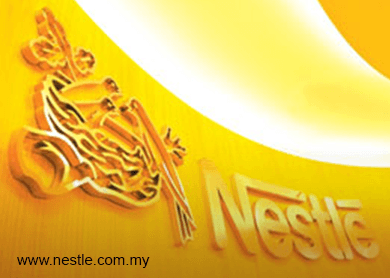
This article first appeared in The Edge Malaysia Weekly, on November 23 - 29, 2015.
 Nestlé (M) Bhd is not one of those counters that punters turn to to make a quick buck. At RM73 a share, it would take a serious investor who believes in its prospects to buy into the food and beverage manufacturer.
Nestlé (M) Bhd is not one of those counters that punters turn to to make a quick buck. At RM73 a share, it would take a serious investor who believes in its prospects to buy into the food and beverage manufacturer.
So far, the performance of Nestlé (fundamental: 1.35; valuation: 1.50) has not disappointed. In the last five years, the company’s revenue has been growing at a steady pace — it increased 19.4% to RM4.81 billion in the financial year ended Dec 31, 2014 (FY2014) from FY2010. Meanwhile, net profit grew 40.6% to RM550.38 million during the same period.
The company, which is 72.61%-owned by Nestlé SA, has been investing to scale up its manufacturing and distribution infrastructure, with a capital expenditure of RM1.5 billion over the last seven years. The latest addition is its eighth factory — in Shah Alam, Selangor, for ready-to-drink products, such as Milo and Nescafé — that was commissioned last month.
Nestlé’s expansion, despite the present weak consumer sentiment locally and lacklustre global economic conditions, indicates its belief that demand for its products in the local market will continue to grow over the long term.
“Malaysia is one of the top five markets for Nestlé in Asia and ranks among the top 20 Nestlé markets. It is also one of the few Asian markets with a growing young population, which will subsequently see the consumer base expanding in the long term,” a Nestlé spokesperson says in an email reply to The Edge.
“As such, Nestlé remains positive about the middle to long-term prospects of the Malaysian market. Our significant investment in the country, with RM600 million capital expenditure in the past two years alone, is testament to this. We strongly believe that Malaysia has a wealth of opportunities to offer and a great long-term future.”
Just recently, the food and beverage company launched locally-made Green Tea Kit Kat bars, which have been certified halal. These chocolate bars will be exported to neighbouring countries over the next few months.
Maybank Investment Bank Research says in a report that it believes Nestlé’s confectionary segment, albeit the smallest contributor to its revenue mix at 7% currently, should stand as one of the fastest-growing segments.
Kenanga Research analyst Soong Wei Siang opines that the rate of Nestlé’s revenue growth would depend more on whether it is able to increase its market share. “There has to be innovation in its products and marketing activities, which can help Nestlé get more market share.”
In Soong’s research report, he takes it as a positive sign that Nestlé will be stepping up marketing campaigns for its new products and for Chinese New Year in early 2016.
However, not everyone feels the same way. TA Securities Research comments that the beefed-up marketing campaigns could cause a decline in margins.
The Malaysian Institute of Economic Research’s Consumer Sentiment Index has been on a downward trend this year, falling to 70.2 points in the third quarter, and economists point to the Goods and Services Tax (GST) as one of the main factors for the decline.
Nestlé’s spokesperson admits that the company has been affected by subdued consumer spending after the implementation of the GST in April. However, its recent third quarter ended Sept 30 results show sales returning to positive territory as consumer sentiment has started to improve, says the spokesperson.
During the quarter, Nestlé’s revenue grew 5.3% to RM1.22 billion from the previous corresponding period while net profit increased 19.4% to RM179.16 million.
It is worth noting that the company has been a benefactor of low raw material prices. Hong Leong Investment Bank Research says in a report that raw materials account for 50% of Nestlé’s input cost. The prices of most of its raw materials such as skim milk powder, coffee and wheat have declined in recent times. Only cocoa prices are on an upward trend.
That said, it would also mean that further weakness in the ringgit could lead to higher cost for the import of its raw materials over a longer period of time, eroding margins.
“It has been and always will be the approach of Nestlé Malaysia to compensate for these cost increases by finding improvements elsewhere — growth with the corresponding economies of scale as well as sustainable cost savings, internally and externally,” says the Nestlé spokesperson.
The spokesperson adds that the company would continue to strive to avoid increasing the price of its products by focusing on internal improvements to maintain prudent cost management and improve efficiency and productivity.
Nestlé’s share price has climbed about 11% over a one-year period. Last Friday, the counter closed at RM73.50. At the present price, many analysts take the view that its 30 times price-earnings ratio is on the steep side while its dividend yield of some 3% is not compelling.
Save by subscribing to us for your print and/or digital copy.
P/S: The Edge is also available on Apple's AppStore and Androids' Google Play.